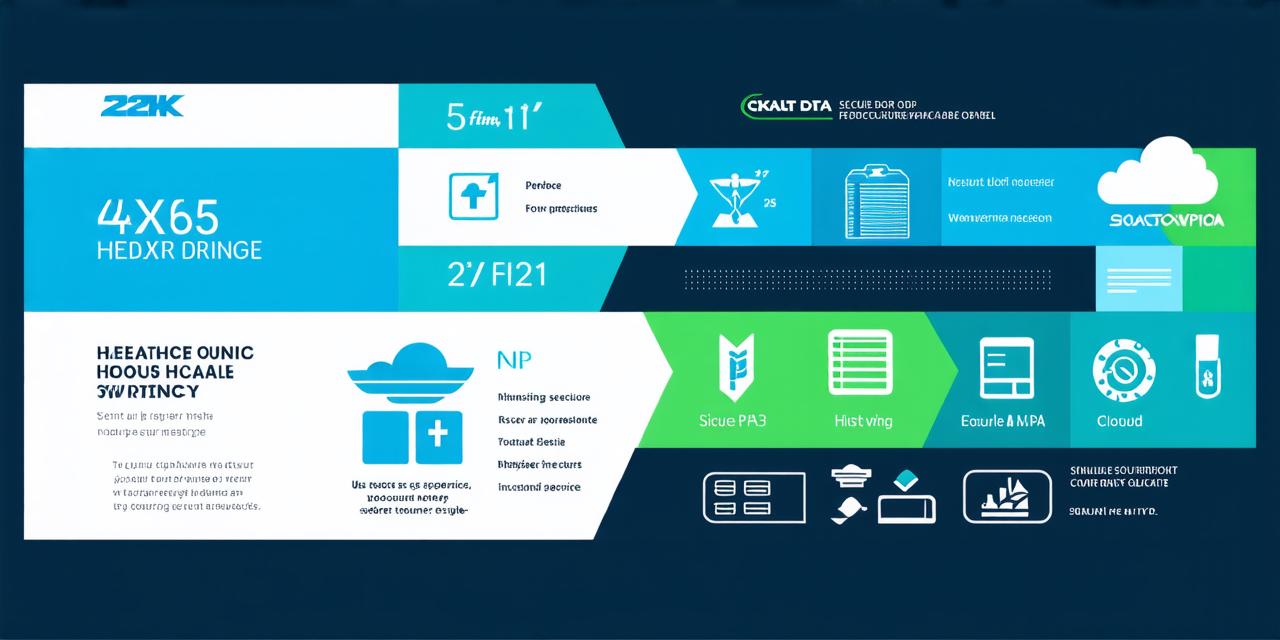Introduction
As a web developer, you understand the importance of having a reliable and efficient hosting provider. A good hosting provider can ensure that your website loads quickly, is always available, and is secure.
The Importance of Choosing the Right Hosting Provider
Before we dive into the steps to check the hosting provider of a website, let’s first explore why it’s essential to choose the right one for your needs. The wrong hosting provider can lead to slow loading times, downtime, and security vulnerabilities, which can negatively impact your website’s performance and user experience. On the other hand, a reliable and efficient hosting provider can provide fast loading speeds, high uptime rates, and robust security measures to keep your website safe from hackers and cyber attacks.
When Choosing a Hosting Provider
There are several factors to consider when choosing a hosting provider, including:
- Performance: Look for a hosting provider that offers fast load times, low latency, and high uptime rates. This will ensure that your website loads quickly and is always available to your users.
2. Security: Choose a hosting provider that offers robust security measures, such as SSL certificates, firewalls, and intrusion detection systems, to protect your website from hackers and cyber attacks.
3. Scalability: Select a hosting provider that offers scalable solutions to accommodate your growing website needs. This will ensure that you can easily upgrade or downgrade your hosting plan as needed.
4. Customer support: Choose a hosting provider with responsive and knowledgeable customer support representatives who are available 24/7 to help you with any issues that arise.
5. Price: Consider the cost of the hosting provider, but don’t sacrifice quality for affordability. Look for a balance between price and value.
Steps to Check Hosting Provider of Any Website
Now that we’ve discussed the importance of choosing the right hosting provider let’s move on to the steps to check the hosting provider of any website:
- Use WHOIS lookup service: A WHOIS lookup service is an online tool that can help you find out the domain name registrar and IP address of a website. You can use this information to determine the hosting provider used by the website. To use a WHOIS lookup service, simply type in the website’s domain name and click on the search button.
2. Check DNS records: DNS records are the phone book of the internet that map domain names to IP addresses. By checking the DNS records of a website, you can determine which hosting provider is responsible for hosting the site. To check DNS records, you can use a tool like dig or nslookup.
3. Use HTTP headers: HTTP headers contain information about the server that is hosting a website. By examining the HTTP headers of a website, you can determine which hosting provider is being used. You can use a tool like cURL to retrieve the HTTP headers of a website.
4. Check website footer or contact page: Many websites include their hosting provider’s name or logo in their footer or contact page. By checking these pages, you can identify the hosting provider used by the site.
5. Use online tools: There are several online tools available that can help you determine a website’s hosting provider, such as HostingChecker, WhatIsMyServer, and WhoIsHosting. These tools use various methods to determine the hosting provider of a website and provide you with the information you need.
Case Study: Choosing the Right Hosting Provider for a High-Traffic Website
Let’s take a look at a real-life example of how choosing the right hosting provider can make a significant impact on a website’s performance. Suppose a web development company is working on a high-traffic e-commerce website. The website is expected to receive thousands of visitors per day, and the company wants to ensure that it loads quickly and is always available to its users. In this scenario, choosing the right hosting provider becomes even more critical.
The first step the web development company took was to research different hosting providers and compare their performance metrics. They looked at factors such as load time, uptime, and scalability, and found that a particular hosting provider offered the best balance of these factors at an affordable price.
Next, they used a WHOIS lookup service to confirm that the chosen hosting provider was actually hosting the website. They also checked the DNS records to ensure that all IP addresses associated with the domain name belonged to the chosen hosting provider.
To further confirm that the hosting provider was responsible for hosting the site, they examined the HTTP headers of the website using cURL. The headers confirmed that the website was being served from the chosen hosting provider’s servers.
Finally, they checked the website footer and contact page to make sure that the hosting provider’s name or logo was visible. They found that the chosen hosting provider was indeed listed on both pages, further confirming their decision.
Conclusion
Choosing the right hosting provider is essential for ensuring that your website performs optimally and provides a positive user experience for your visitors. In this guide, we’ve walked you through the steps to check the hosting provider of any website, so you can make an informed decision about which one to use for your own projects.
When choosing a hosting provider, consider factors such as performance, security, scalability, customer support, and price. By following these steps and carefully selecting the right hosting provider, you can ensure that your website loads quickly, is always available, and is secure from hackers and cyber attacks.



